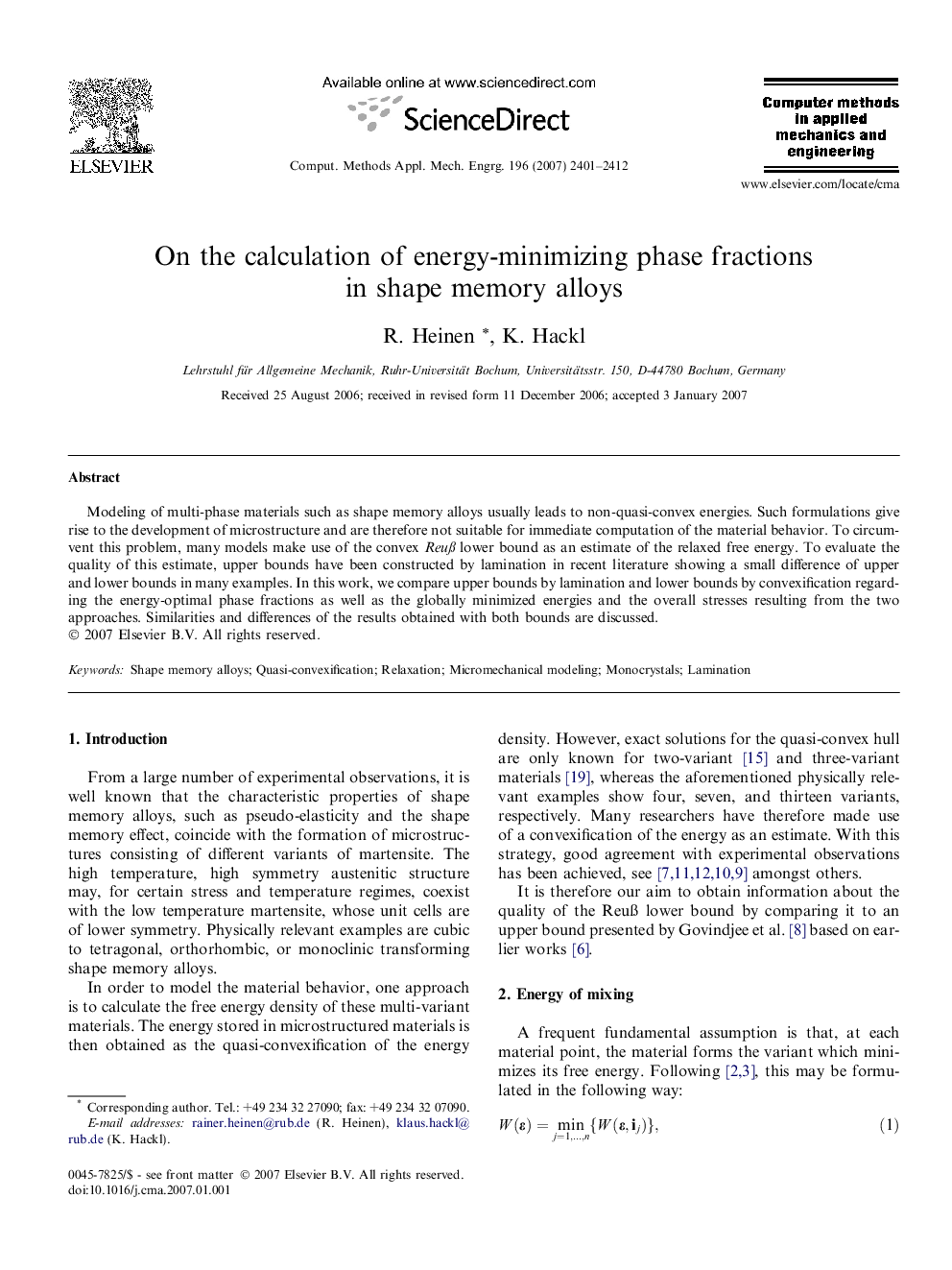| Article ID | Journal | Published Year | Pages | File Type |
|---|---|---|---|---|
| 500318 | Computer Methods in Applied Mechanics and Engineering | 2007 | 12 Pages |
Modeling of multi-phase materials such as shape memory alloys usually leads to non-quasi-convex energies. Such formulations give rise to the development of microstructure and are therefore not suitable for immediate computation of the material behavior. To circumvent this problem, many models make use of the convex Reuß lower bound as an estimate of the relaxed free energy. To evaluate the quality of this estimate, upper bounds have been constructed by lamination in recent literature showing a small difference of upper and lower bounds in many examples. In this work, we compare upper bounds by lamination and lower bounds by convexification regarding the energy-optimal phase fractions as well as the globally minimized energies and the overall stresses resulting from the two approaches. Similarities and differences of the results obtained with both bounds are discussed.
